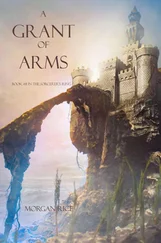The crew of the Squalus were as lucky as they were unlucky; the Navy’s first submarine rescue chamber had just been completed and tested. The Squalus was its maiden rescue. Thirty-three survivors rode it to the surface. The chamber was a modified diving bell. As with an inverted drinking glass lowered into water, the pressure of the air trapped inside keeps the water outside. A diver accompanied the bell to position its opening over the lip of one of the submarine’s hatches and bolt it in place. The sub’s hatch could now be opened, and small groups of crew helped into the chamber.
Prior to this, sinking was likely a death sentence. Even a few inches of water will bear down on a submarine hatch—or a car door, for that matter—with sufficient pressure that it can’t be pushed open (unless one equalizes the pressure by letting water in). On the smaller subs of the 1920s, the air would last about three days. It was one of these “iron coffins,” the S-51, that inspired Lieutenant Commander Charles “Swede” Momsen to come up with a way to get people out. Momsen’s sub had been the one that first arrived on the scene. All the crew could do was stare at the oil slick on the surface of the water, “utterly helpless,” as Momsen wrote to a friend. When the sub was salvaged, bodies of the crew were said to have been found with their fingers torn and bloodied from trying to pry open a hatch against fifteen tons of ocean.
Given that most US ballistic missile submarines today spend the bulk of their time in oceans that bottom out deeper than their crush depth, the term “iron coffin” has regained some accuracy. Crush depth is the point at which the hull succumbs to the extreme water pressure and the sub implodes. John Clarke likens it to putting a submarine inside a giant bomb. The sub shatters inward. And the crew? “If you can imagine,” Clarke says, “all the metal parts are imploding together and anything in the way would be crushed and shredded and pounded into bits.” No one saves your bottom now. On April 10, 1963, the USS Thresher imploded, killing all 129 men aboard. “She’s scattered all over the seafloor,” Jerry Lamb says.
In light of the deep-sea haunts of modern subs, why even bother with rescue and escape systems? Do they simply exist to, as one submariner expressed it, “give moms and dads a warm feeling”? No, no more so than airplane emergency exit slides. Because, as with airplanes, most collisions take place on arriving or departing: in port or airport, where the traffic is busiest but the plummet most survivable.
The Tang went down in water just 180 feet deep, but rescue was complicated by the circumstances of battle. She sank in the midst of the convoy of Japanese ships she’d spent the night torpedoing and sinking. In the end, bad air forced the crew’s hand. Smoke had built up from the burning of classified paperwork, and saltwater had reached the batteries, creating deadly chlorine gas. Disaster luncheon. You didn’t need a decision tree to know that Stay had turned into Go.
Swede Momsen invented something for this scenario, too. During World War II, subs were equipped with escape trunks and Momsen lungs. (The “lung” was a wearable air supply that, upon reaching the surface, handily converted to a flotation device). Like an airlock on a spaceship, the escape trunk allows for the equalization of pressure inside and outside. On a sub, this allows the hatch to be popped open and the lung-clad sailor set loose in the brine. The Tang was the first bottomed sub from which sailors escaped without the aid of a rescue bell. There were nine, four of whom subsequently drowned or disappeared. (In the surreal etiquette of war, the five survivors were plucked from the near-freezing water by their enemies—as the Tang ’s commanding officer described them, “the burned and mutilated survivors of our own handiwork”—who then beat them and sent them to starve in a prisoner of war camp.)
What happened to the rest of the men gathered in the Tang ’s torpedo room in their Momsen lungs? Why didn’t they escape? They weren’t sure how to do it. “A majority of the men,” reads the patrol report, “had never been properly trained in the use of the Momsen lungs or operation of the escape tank. They, therefore, didn’t have any self-confidence in their ability to escape, causing a general feeling of defeat among them…. After the first two attempts there were very few men left who cared to try an escape although they knew what was going to happen to them below.” They are all there in the Summary of Escapes. Torpedoman’s Mate Fluker: “Would not try after this, his second attempt.” Unnamed Ensign: “Removed in stupor from trunk; preferred not to try again.” Unnamed Machinist’s Mate: “Would not try after this, his first attempt.”
A little practice might have made the difference. “Although everyone had read how to escape,” says the report, “not one had actually went through the motions.” In 1930, at the urging of Swede Momsen, an escape training tank was commissioned for the submarine base in Groton. With the hope that every submariner would have a chance to went through the motions.
AT 40 feet deep and 84,000 gallons, the Naval Submarine School’s Pressurized Submarine Escape Trainer holds easily as much water as a hotel swimming pool. In diameter, though, it’s closer to a Jacuzzi. It’s the sort of thing you might drop into by accident, like a manhole, because you didn’t notice it was there. Despite the aquamarine water and the echoey tile walls, pool isn’t the right word. This is a column of pretend ocean that exists for a single, highly nonrecreational purpose: to practice bailing out of a stricken sub.
Twenty-six sub school students stand around the water’s perimeter in identical (Navy) blue swim trunks. They are young enough that the pimples on their backs still outnumber the tattoos. In ten years it will be different. Navy boys accrue ink like sun damage. A little more every year, in every port. The first training exercise will begin in an escape trunk that feeds into the water fifteen feet down. No breathing apparatus will be worn, just a life jacket. The instructor calls it “a buoyant exhaling ascent,” a term I will tuck away for later use should I ever be called upon to write opera reviews.
Exhaling is the word to be underscored. Faced with an ascent from deep underwater, novice swimmers are inclined to hold their breath—not just to stay alive, but to help buoy them to the surface. They may not realize that that initial lungful of air they took in will expand as they rise and the water pressure decreases. If that breath expands enough, it will burst the lung’s alveoli—the tiny sacs where an exchange of gases in the air and the blood takes place. Should this happen, air bubbles can get into the bloodstream. Air embolism. Not good. Critical care luncheon. The bubble can act like a clot, blocking blood flow and starving organs of oxygen. If the organ in question is the brain or heart, the tissue damage may be fatal. There is speculation in the Tang patrol report that this had been the fate of four men who made it out of the escape trunk but then disappeared: that they’d lost the mouthpieces of their Momsen lungs and hadn’t realized the consequences of holding their breath.
“It’s the Golden Rule of sub school,” the instructor, Eric Nabors, is saying. “Don’t hold your breath.” Nabors carries the evocative title Diving Officer, and seems built in keeping. His hair is buzzed to a half millimeter, his wedding band tattooed. Nothing disrupts the hydrodynamic flow of Eric Nabors in a wetsuit.
To modulate their exhalation—not too fast, not too slow—the young men are instructed to pretend they’re blowing out birthday candles. Yelling also works. To further discourage breath-holding, Nabors and his fellow instructors used to inflate a wine bag down at the bottom of the water and let it go. As it surfaced, the bag would burst.
Читать дальше












